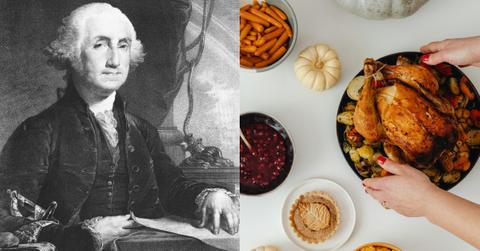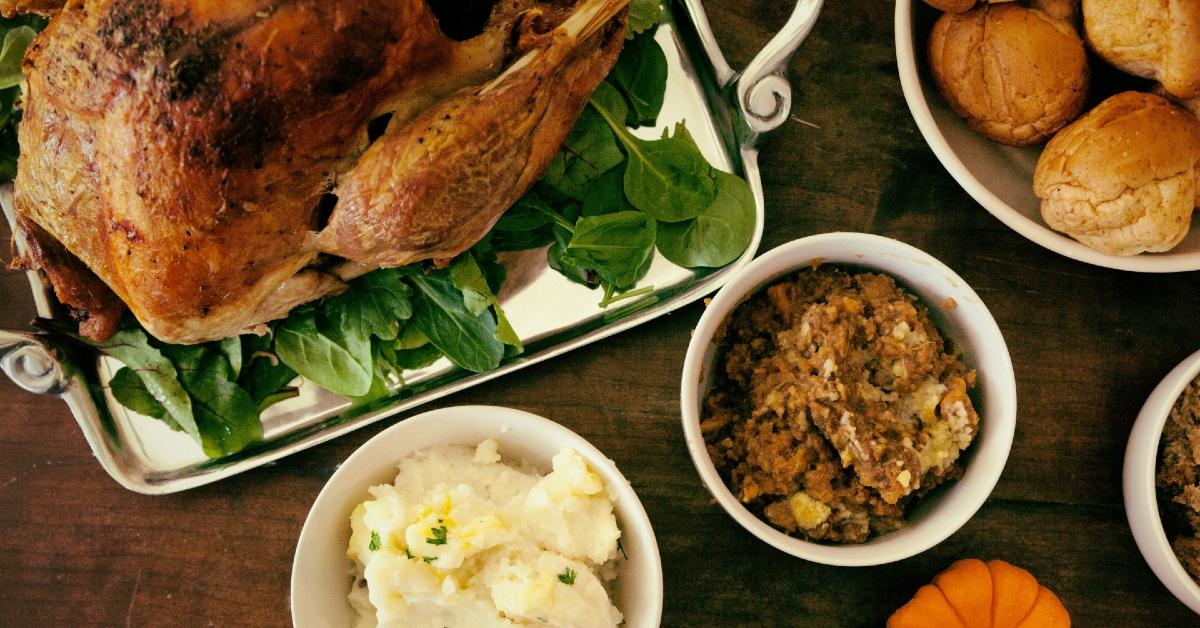Thanksgiving Always Falls on a Thursday — Why? This Founding Father
The first-ever Thanksgiving occurred on September 8, 1565.
Published Nov. 17 2025, 11:06 a.m. ET
If you believe that the Large Hadron Collider at CERN is responsible for a timeline shift, you've probably gone down a few Mandela Effect rabbit holes.
One that even includes Thanksgiving Day always being on the third Thursday in November. And while there are some differing opinions on when the fall holiday traditionally took place, one thing is certain: it's always on a Thursday. But why is that the case?
Why is Thanksgiving always on a Thursday?
Historically speaking, the holiday has always fallen on the third or fourth Thursday of the 11th month in our calendar year.
Since 1941, every fourth Thursday has been reserved for national festivities. In fact, Abraham Lincoln even proclaimed that the last Thursday in November should be the official day for celebrating Thanksgiving.
In 1939, however, President Franklin D. Roosevelt moved it up by a week. This was a maneuver to help stimulate the economy, as it would effectively extend the holiday shopping season.
The thought was that if people had more time to be in a more festive mood, then they would be more prone to spending money and boost retail sales figures.
This sparked controversy at the time, with folks criticizing Roosevelt for the date shift. Time magazine wrote that the decision had lasting effects on the American consumer experience, eventually giving way to modern-day "Black Friday" deals.
The first presidential decree involving Thanksgiving, however, dates all the way back to our founding fathers and the first-ever commander-in-chief: George Washington.
In 1789, the revolutionary hero designated Thursday, November 26, as "a day of public thanksgiving" according to Brittanica.
For several decades, the specific date would change "from month to month and date to date," the encyclopedia announced.
It wasn't until 1863, when Honest Abe took office, that the fourth Thursday in November was officially designated as the date for Thanksgiving.
So the third Thursday of the month's tenure was short-lived, as outrage against the date change was characterized as it being "nothing but a money grab by retailers," Brittanica stated.
A congressional law in 1941 ultimately sealed the deal.
When did the first Thanksgiving ever take place?
As per the National Park Service, the first-ever Thanksgiving didn't occur in November, but on September 8, 1565. After Pedro Menendez de Aviles and 800 Spanish settlers landed in the future site of St. Augustine.
Menendez and his crew, shortly after landing in the New World, held a Mass of Thanksgiving.
A meal was prepared for those who made the journey, and the native Seloy tribe was invited to partake in the meal. The feast also included a prayer, which was conducted by Father Francisco Lopez de Mendoza Grajales, who became the first pastor of St. Augustin.
The National Park Service also wrote that the Seloy in attendance "imitated all they saw done," when it came to the religious ceremony.
However, Food52 wrote of another, more famous inaugural Thanksgiving meal, which also took place at Plymouth Colony in Massachusetts in 1621.
Like the gathering that occurred in St. Augustine, this gathering also took place earlier than November, but still during the autumn harvest.
The outlet went on to state an assortment of food that was much different from the fare folks usually enjoy during Thanksgiving, which included deer, various wild fowl, cod, bass, flint, and different types of corn, which were made into bread and porridge.

